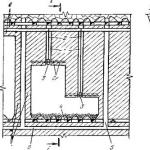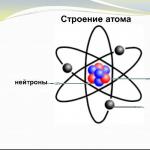In Moscow on October 30, on the Day of Remembrance for Victims of Political Repression, a monument to the memory of victims of political repression “Wall of Sorrow” will be unveiled. The ceremony will be attended by a reserve FSB colonel and Russian President Vladimir Putin, who, TASS emphasizes, several years ago supported the initiative of human rights activists to erect a monument and issued a corresponding decree.
The Kremlin press service reports that the head of state and members of the Presidential Council for the Development of Civil Society and Human Rights (HRC), at the end of the Council meeting scheduled for Monday, “will take part in the opening ceremony of the Wall of Sorrow memorial to victims of political repression.”
Vladimir Putin is not the first head of state to raise the issue of perpetuating the memory of victims of political repression in the country. Thus, a similar idea was expressed by the General Secretary of the CPSU Central Committee Nikita Khrushchev in 1961 at the XXII Party Congress. In 1990, the Moscow City Council adopted a resolution to install such a monument at Lubyanka. In the same year, in front of the NKVD (FSB) building, a granite boulder was installed, brought from the territory of the former Solovetsky special purpose camp in the Arkhangelsk region. And the day of its opening began to be celebrated as the Day of Remembrance for Victims of Political Repression.
The date was determined in memory of the events of 1974, when political prisoners of the Mordovian and Perm camps, as well as the Vladimir prison, went on a hunger strike to protest against political repression in the USSR, and Andrei Sakharov and the Initiative Group for the Defense of Human Rights told Western journalists about political prisoners at a press conference . Subsequently, throughout the country - at the sites of mass executions, territories of former camps, settlements of special settlers, etc. Hundreds of monuments, memorial signs, chapels and walls of memory were opened.
— Memorial (@MemorialMoscow) October 29, 2017
The idea of erecting a monument in the capital to the memory of victims of political repression in Moscow was defended by the head of the Presidential Council for Human Rights, Vladimir Fedotov. Vladimir Putin signed a corresponding order to the Moscow government in December 2014. Two months later, the project competition started.
A total of 336 projects for a monument to victims of political repression were created. The winner of the competition was sculptor Georgy Frangulyan. Second place went to “Prism” by Sergei Muratov, and third place went to “Torn by Fate” by Elena Bocharova. The President of the Russian Federation signed a decree on the construction of the monument on September 30, 2015. The total cost of the project was 460 million rubles, of which 300 million rubles were paid by the Moscow government. The collection of the missing amount continued for two years. Vladimir Fedotov has repeatedly pointed out the “absolutely disregardful” attitude of federal television channels and major philanthropists towards the project. At the same time, many residents of the capital and regions transferred donations in the amount of 100 and 500 rubles.
The "Wall of Sorrow" memorial was installed in a park with an area of 5.4 thousand square meters. meters on the inner side of the Garden Ring, at the intersection of Sadovo-Spasskaya Street and Academician Sakharov Avenue. The monument, 6 meters high and 35 meters long, is a spatial double-sided bas-relief made of 80 tons of bronze, representing an endless combination of schematic, both flat and three-dimensional human figures soaring up and reaching upward. On the planes of the bas-relief one word is written - “Remember” - in different languages. It is complemented by granite compositions that figuratively refer to dungeons and echelons, and the square itself is planned to be paved with the inclusion of stones from places of imprisonment of repressed prisoners.
The day before, October 29, at the Solovetsky Stone in Moscow, victims of political repression "Return of Names". Anyone who wished to take part in the action was able to read the names of several of the 40 thousand Muscovites executed.
Until the end of the 1980s, information about those repressed was a state secret. In 1988-1989, the media began publishing the first lists of victims of repression. In many regions, on the initiative of the Memorial Society and with its participation, they began to prepare “Books of Memory” - special publications containing not only names, but also brief biographical information about the victims, and sometimes photographs. In 1998, the society began to create a unified database based on information from regional “Books of Memory”. In 2007, the latest, 4th, edition of “Victims of Political Terror in the USSR” was published (with additions as of December 13, 2016), containing more than 2.6 million names.
The Federal Archive Agency (Rosarkhiv), the State Archives of the Russian Federation and the Hoover Institution of War, Revolution and Peace at Stanford University (California, USA) prepared and published a collection of documents in 7 volumes, “The History of Stalin’s Gulag. The late 1920s - the first half of 1950.” 's" (2004). Memorial's "Return of Names" campaign was held for the tenth time this year.
— DW (in Russian) (@dw_russian)
P A M Y T N I K I ZH E R T V A M P O L I T H E S K I X
R E P R E S S I Y
Monument to the victims of political repression in Astrakhan, Russia

Monument to the victims of political repression in Abakan, Khakassia, Russia

Monument to prisoners of Kolyma on the Arkagalinsky pass, Magadan region. Russia

monument to repressed Lithuanians “Those who did not return...” in the village. Abez Inta district, Komi, Russia

Monument to the victims of political repression in Barnaul, Russia

Monument to the victims of political repression in Borovichi, Novgorod region, Russia

Monument to the victims of political repression in Belgorod, Russia

Monument to the victims of political repression in Vorkuta, Komi, Russia

Monument to the victims of political repression - "Stone of Tears" in Vladikavkaz, North Ossetia, Russia

Monument to the victims of political repression in Volzhsky, Volgograd region, Russia

Monument to the victims of political repression in Volgograd, Russia

Monument to the victims of political repression of the Soviet people in Kaliningrad, Russia

Monument to the victims of political repression in Kaluga, Russia

Monument to Labor Army soldiers - repressed Russian Germans in Krasnoturinsk, Sverdlovsk region, Russia

Monument to the victims of political repression "Unconquered" in Kyzyl, Tyva, Russia

Monument to the victims of political repressions of the 1920s - 1950s. in the village Kabardinka, Krasnodar region, Russia

St. Nicholas Church-monument to victims of repression in Krasnoyarsk, Russia (on the site of the former KRASLAG transit point)

Monument to the victims of political repression in Moscow, Russia

Monument to the victims of political repression in Murmansk, Russia

Memorial to victims of political repression "Mask of Sorrow" in Magadan, Russia

Monument to the victims of political repression in Murom, Vladimir region, Russia

Memorial complex to victims of repression in the village. Nasyr-Kort, Ingushetia, Russia
Monument to the victims of political repression in Novosibirsk, Russia
(stone from the territory of the Siblag penal department)

Monument to the victims of political repression in the village of Novobureysky, Amur region, Russia

Monument to the victims of political repression in Okulovka, Novgorod region, Russia

Monument to the victims of mass political repression in Omsk, Russia

Monument to the victims of political repression in the village. Pinega, Arkhangelsk region, Russia

Monument to the victims of political repression in Perm, Russia

Memorial to the victims of political repression "Innocently Murdered" in Rostov-on-Don, Russia

Monument to the Poles - prisoners of Solovki at the former camp cemetery in the village. Solovetsky, Arkhangelsk region, Russia

Monument to Solovetsky prisoners 1920-1939. in the village of Solovetsky, Arkhangelsk region, Russia

Monument to the victims of political repression in Samara, Russia
(stone from the territory of the Solovetsky special purpose camp)

Monument to the victims of political repression in St. Petersburg, Russia

Monument to the victims of political repression in Sosnogorsk, Komi, Russia

Monument to the victims of political repressions of the 1930s - 50s. in Stavropol, Russia

Monument to victims of political repression "Mourning Angel" in Togliatti, Samara region, Russia

Monument to victims of repression in Tver, Russia

Monument to victims of repression in Tambov, Russia

Monument to the victims of political repression in Ufa, Bashkiria, Russia

Monument to Russian repressed Germans in Ufa, Bashkiria, Russia
“Millions of people were declared enemies of the people, were shot or maimed, went through the torment of prisons or camps and exile,” Vladimir said at the ceremony, “the terrible past cannot be erased from the national memory” - and at the same time it cannot be justified by “any higher the so-called benefits of the people."
Together with Patriarch Kirill and the mayor of Moscow, the president laid flowers at the “Wall of Sorrow.”
Throughout Monday evening, live instrumental music will be played on the square near the memorial, informational broadcasts will be broadcast, and thematic stories will also be shown. After the opening ceremony, the “Wall of Sorrow” was open to everyone.
The “Wall of Sorrow” was not closed with barriers even before the opening. It would be difficult to do this: it is a sculptural group of impressive size: a double-sided high relief 30 meters long and 6 meters high, located in a semicircle.
It took more than 80 tons of bronze.
The basis of the composition is made up of faceless figures soaring upward - as sculptor Georgy explained to Gazeta.Ru, they should symbolize the fragility of human life in the face of a totalitarian system. According to the artist, the shape of the monument should convey to people the feeling of the “roar of terror” and the “gnashing of evil.” In the monument, which actually consists of figures molded together, there are gaps made in the form of human silhouettes through which viewers can pass - this will allow them to feel that anyone can become a victim, explains Frangulyan. Along the edges of the monument there will be stone pillars - “tablets” with the word “remember” in different languages.
The area in front of the “Wall of Sorrow” is lined with stones brought from the places where victims of political repression were imprisoned.
“The image of the monument arose in me in five minutes,” Frangulyan told Gazeta.Ru, “everything on the “Wall of Sorrow” is not at all accidental: it is a complex compositional series. Every stroke is made by my hands. To date, this is my most important work.”
The total cost of the project was 460 million rubles. The Fund “Perpetuating the Memory of Victims of Political Repression” was involved in collecting funds for it. At the same time, it allocated 300 million rubles. A significant portion came from private donations. Frangulyan's project won the competition, to which a total of 340 concepts were submitted. The jury included the chairman of the board of the company, the chairman, the coordinator of the Moscow Helsinki Group and the director. All of them are announced as participants in the ceremony.
The opening date was chosen long ago and in advance - October 30 marks the day of political repression; The HRC meeting on that day was devoted to the problem of perpetuating the memory of victims in Russia. A day earlier, the “Return of Names” event, timed to coincide with the day of remembrance of victims of political repression, took place at another monument that still served as a memorial - the Solovetsky Stone.
About two thousand people lined up to briefly say into the microphone the names, place of residence and date of execution of the victims of repression, including their relatives.
The “Solovetsky Stone” took its place on Lubyanka Square in the late 80s, when the topic of repression began to be actively discussed again for the first time after the “thaw”. A large boulder brought from the islands, where the former monastery housed SLON - the Solovetsky Special Purpose Camp, which was de facto a political prison. The stone was placed on Lubyanka Square as a sign that one day a full-fledged memorial would be built in Moscow. However, the issue of its construction was returned only 25 years later, when in August 2015 the concept of state policy to perpetuate the memory of victims of political repression was approved.
On October 30, 2017, a monument dedicated to the victims of repression will open in Moscow. Author project - Georgiy Frangulyan. The monument was installed on Sakharov Avenue. "Wall of Sorrow" is the name of the monument.
Background
In 1961, at the next party congress, Nikita Khrushchev raised the issue of debunking Stalin’s personality cult. It was then that the idea of creating a monument to the victims of repression was first considered. But the matter did not progress beyond conversations. Moreover, Khrushchev proposed paying tribute to the memory of “loyal Leninists” - party members executed during the years of Stalinism. When the era of the so-called Thaw ended, the idea of creating a monument was completely forgotten. We remembered her in the late eighties.
and other monuments
During the perestroika years, the topic of victims of repression became quite discussed. Now is the most opportune time to install a monument. The monument unveiled at Lubyanka is called the Solovetsky Stone. It is made of granite brought from the territory of the former camp. The grand opening took place on October 30, 1990. Where mass executions took place in the 30s, sculptural compositions, memory walls, and chapels were subsequently installed. One of them, “Mask of Sorrow,” is located in Magadan. A memorial plaque with the inscription "Last Address" is installed in many cities of Russia.

Preparing to create the "Wall of Sorrow"
Since the early nineties, many monuments have been opened in the country. Why is there a need to create another one? The fact is that in many countries that were part of the USSR, monuments dedicated to the victims of Stalin’s repression have existed for several decades. In Moscow there is only a foundation stone. In size and composition, this monument does not convey the tragedy and grief that thousands of Soviet families had to endure.
The issue of installing the “Wall of Sorrow” was raised more than once by Vladimir Fedotov - chairman Council for Community Development and Human Rights. In October 2014, the President of Russia was presented with a draft of the monument. At the end of December, an agreement was reached regarding the location of the monument.

Contest
When it comes to creating such a monument, the author of the future project is chosen over the course of several months. The competition started in February 2015. Only one of its participants was to become the author of the monument. It was assumed that some projects could be used in other cities of Russia.
In total, the competition jury considered more than three hundred options. To select a suitable project, an exhibition was organized, which lasted about a month. The winner was Georgy Frangulyan. The monument to the victims of repression could have had a different name. "Wall of Sorrow" is the name of the monument created by Frangulyan. Sergei Muratov took second place in the competition with his project “Prism”. Third - Elena Bocharova ("Torn Fates").
The memorial will be installed at the intersection of Sadovo-Spasskaya Street and Sakharov Avenue. "Wall of Sorrow", according to the jury, is the most appropriate spirit of the gloomy Stalin era In addition, it has a very succinct, telling name. The construction of the monument is carried out not only at the expense of the state, but also at the expense of public donations.

Description of the monument "Wall of Sorrow" in Moscow
Quite impressive in size. Until the opening, it will be stored in the park next to Sakharov Avenue. The height of the monument is 6 meters. Length 35 meters. 80 tons of bronze were used to create the Wall of Sorrow. The monument is a double-sided bas-relief depicting human figures. The images are both flat and three-dimensional.
In the photo "Wall of Sorrow" presented above, you can see human figures. There are about six hundred of them here. On the heavy wall, the composition of which is based on playing with volumes, there are quite large gaps, made in the shape of a human silhouette. You can go through them. This is a kind of artistic design that allows people to feel like they are victims of an all-powerful and merciless system.
The Wall of Sorrow in Moscow is not just a monument. This is a warning that will allow descendants to realize the sad consequences of authoritarianism and the fragility of human life. Perhaps such a sculptural composition will protect representatives of the future generation from repeating the mistakes of the past. On the "Wall of Sorrow" there is only one word engraved. But this word is present here in 22 languages. Along the edges of the wall, “Remember” is engraved multiple times.
The "Wall of Sorrow" is located in the park, which is framed by granite stones. In front of the relief there are several spotlights mounted on granite pillars. The road to the monument is paved with stones. This is an unusual building material. The road to the “Wall of Sorrow” is paved with stones brought from camps, places of mass executions, as well as settlements whose residents were subjected to forced deportation: Irkutsk, Ukhta, Vorkuta, Khabarovsk Territory, Bashkiria and other regions of Russia.
Next to the monument is the Sogaz building. According to the sculptor, this building symbolizes power and clumsiness. In a way, she is part of the monument. It creates a fitting, eerie backdrop for a wall that represents tens of thousands of human victims.

Historical reference
Even today there is no exact information about how many people died during the years of repression. Mass arrests began in the late 20s and ended only after Stalin's death. The worst period was 1937-1938. Then about 30 thousand people were sentenced to death.
Victims of repression include not only those who were convicted under political charges and sentenced to death. The wives, husbands, and relatives of those arrested were sent to the camps. Children under 15 years of age were to be placed in cities far from Moscow, Leningrad, Minsk, Kyiv, and Tiflis.






